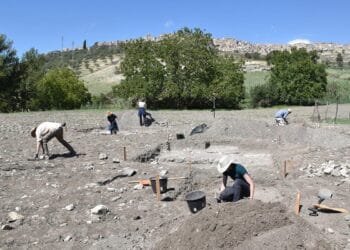Thermae were large public bathhouses in ancient Rome that played a significant role in the social and cultural life of the city. The word “thermae” comes from the Greek word for “hot springs,” which reflects the original purpose of these bathhouses as places to access hot, mineral-rich water for therapeutic purposes.

Over time, the role of thermae expanded beyond their medicinal function to become important centers of social activity. Roman citizens of all classes would visit thermae to bathe, exercise, and socialize with their peers. The bathhouses were often decorated with beautiful art, including mosaics and frescoes, and also featured libraries, gardens, and other amenities.
Some of the most famous thermae in Rome include the Baths of Caracalla, which were built in the third century AD and could accommodate up to 1,600 bathers at a time, and the Baths of Diocletian, which were even larger and included a massive central hall that could seat 3,000 people.

























